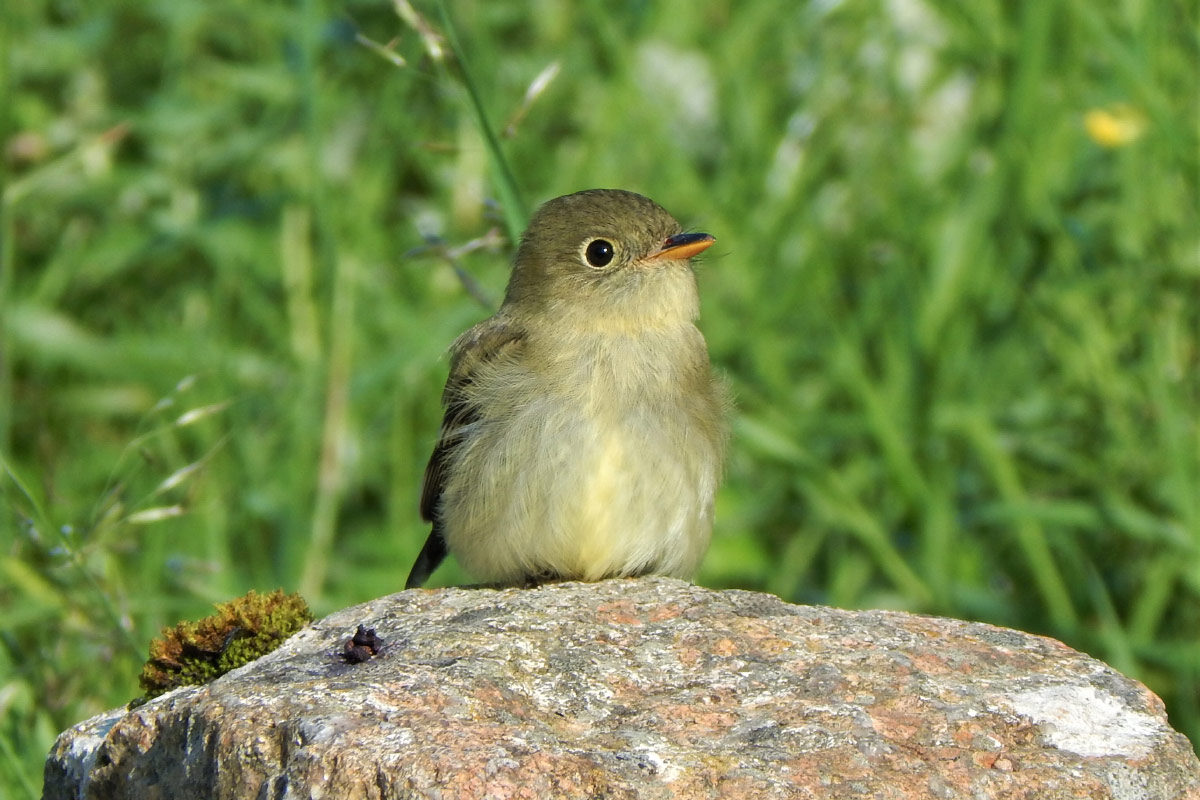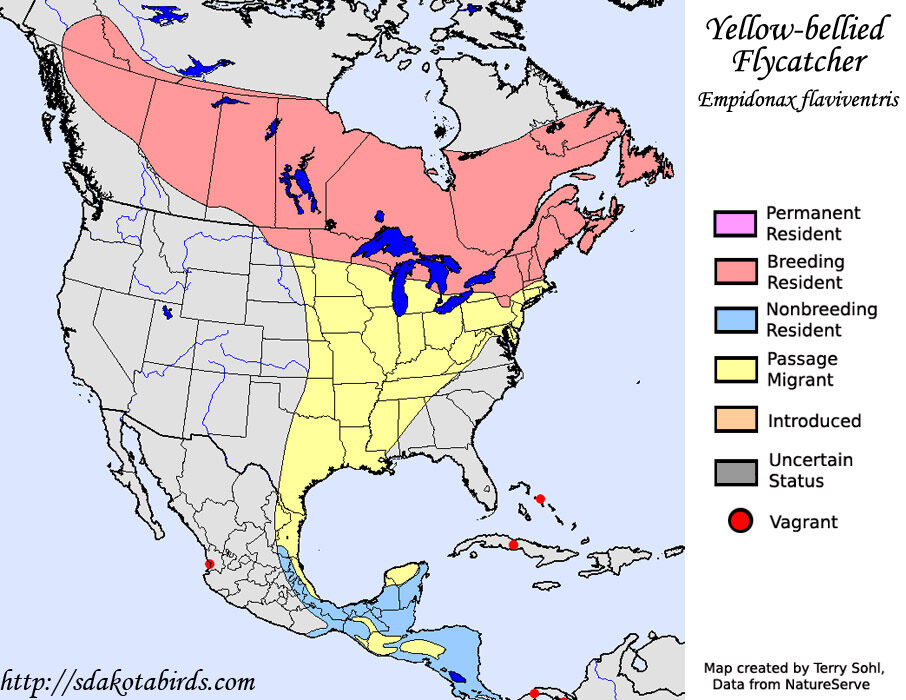
A fresh juvenile Common Rosefinch popped up briefly in our garden the following day and with the winds slackening in a ridge of high pressure, my bird-finding thoughts switched back towards drift migrants from the east. First thing on Tuesday morning, I casually opened the curtains of our lounge windows with a cup of tea in hand and was dumbfounded by what I saw! In exactly the same willow where the rosefinch had been the previous day, a boldly marked flycatcher eyed me from just a few metres away. Rich olive-green above, with a complete bold eye-ring, an orange lower mandible, a distinct yellow suffusion on the throat and down the breast, and very striking whitish wing-bars and edgings to the tertials and secondaries - it was an Empidonax flycatcher! I grabbed my camera and took a few record shots to make sure I wasn't hallucinating.
Identification was fairly straightforward: the shortish tail, large head with a "cute" expression and rather compact structure narrowed it down to being a Least or Yellow-bellied Flycatcher (thus avoiding the far trickier Willow/Alder/Acadian Flycatcher species grouping), while the yellow suffusion below and rich green upperparts, plus immaculate condition of its tail and flight feathers quickly pronounced it to be a first-winter Yellow-bellied Flycatcher - the first for the Western Palearctic - and a species I have seen before on migration in Mexico and Belize.





It will probably miss home though. (Though there's other similar flycatchers around, they speak with such a thick Scottish / Tyree brogue that N. American birds can't understand them.)
Oh well.
R.C.